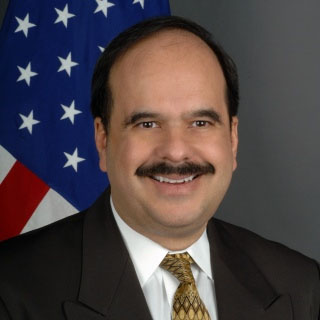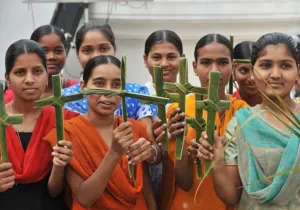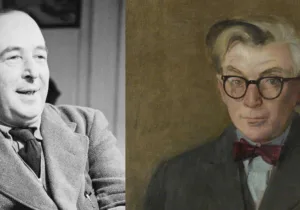If one could recreate a demographic map of the Middle East at the start of the twentieth century and see it portrayed graphically, one would visualize all sorts of fascinating things. One would see greater religious diversity in many places, greater than is the case today. The region’s Christian population would be seen as important minority groups, key parts of the great commercial cities from Cairo to Istanbul. But there would also be mountainous areas of the region—stretching in an irregular arc from the Mediterranean to the Black Sea—where rural Christian communities were thickly settled and were even local majorities.
Such an archipelago of Highland Christian peasants in the Middle East would begin, from west to east, with Mount Lebanon and jump north to the Wadi al-Nasara of mostly Greek Orthodox villages near modern Syria’s Coastal Mountain Range. The next “island” would have been due north in the Taurus Mountains of what is now southern Turkey, the ancient Armenian Cilicia, and still possessing, despite the horrific Hamidian massacres of 1894–96, a considerable Christian population, mostly Armenian, in 1900.
Moving due east about 400 kilometers, you would reach the Tur Abdin, “the Mountain of the Servants of God,” filled with heavily Syrian Orthodox and Catholic populations, not just in cities like Mardin and Midyat, but settled in many villages built around fortress-like stone churches and monasteries, such as the “Saffron Monastery” of Saint Ananias (Mor Hananyo), the patriarchal seat of the Syrian Orthodox Church. Still further east, in the Hakkari Mountains of what is now southeastern Turkey, was a large settlement of Assyrian Christian tribes, clustered together around their hereditary (from uncle to nephew) patriarch at the village of Qodchanis since the seventeenth century. Still further east, in what is now modern Armenia, Nagorno-Karabakh (Artsakh), and Georgia, were other large pockets of Christian highlanders, overwhelmingly ethnic Armenians and, further north, Georgians. Of these three, Artsakh is the farthest east and the last Christian-majority population in the vast expanse of South Asia until you hit the Philippines.
Twenty years later, that Middle East map would have been drastically altered. The numbers and percentages of Christians along our mountain “island chain” would be decreased everywhere, from Lebanon to the Caucasus, as a result of famine, war, and the genocide carried out by the Ottoman Turks. The clusters in the Taurus and Hakkari Mountains would have been totally wiped out by 1921–22, as would be Greek, Armenian, and Assyrian populations through large swathes of lowland Turkey elsewhere. Tur Abdin’s Christian population would be severely diminished but die out slowly over the decades as a result of migration to the West, aggressive Turkification policies, and the long war between the Turkish state and Kurdish guerrillas in the 1980s. The Syrian Orthodox patriarchal seat would be moved to French Mandate Syria. Today there are more Turoyo speakers in Europe than in the Tur Abdin itself.
Of the three Caucasus populations, that of the Republic of Georgia seems the most secure, threatened as it is mostly by its massive neighbor Russia. For Armenia and Armenian-majority Artsakh (Nagorno-Karabakh is internationally recognized as part of Azerbaijan), the situation is far more perilous, surrounded by Islamist and nationalist Turkey on the west and by wealthy and hostile Azerbaijan on the east. Iran to the south, ostensibly an Armenian ally, is a fair-weather friend with complicated, sometimes cooperative relations with Turkey and its own restive Iranian Azeri population. Russia too is a longstanding Armenian ally and also conflicted, with its own complicated relationships with Turkey, Azerbaijan, and Iran. Basically, even including its ostensible supporters in Russia and Iran, there seems to be no state supporting Armenia with such open enthusiastic support as Turkey supports Azerbaijan.
The three-decades-long, spasmodic war for Nagorno-Karabagh between Azeris and Armenians has been bloody. There have been massacres, abuses, displacements, and human rights abuses of every kind on both sides. In 1939, according to the Soviet census, about 10 percent of the population of Soviet Armenia was Azeri. In the same census, about 12 percent of the population of Azerbaijan was Armenian. Those populations are practically gone as de facto population transfers occurred, after several massacres and pogroms. In 1989, a quarter of Nagorno-Karabakh’s population was Azeri. Today the number is zero.
I first became interested in the conflict in 1996 when I purchased maps on the region in the Armenian quarter of Aleppo, and I have followed it through the years. I claim no special expertise to such a specialized subject that has claimed decades of service and study by international civil servants. I am suspicious of both single-issue special pleaders and “experts” with no knowledge of the region and, especially, its languages. I do know that this is a conflict that has both simmered and exploded for years but also came close to being resolved.
But two things are paramount to me both as a Christian and as someone who does care about international peace and security.
First, the latest intervention of Recep Tayyip Erdogan’s Turkey, a predatory power hopped up on Islamist and nationalist rhetoric and with a raft of grievances—real and invented—is not a positive development. We are almost at the centenary of Turkey’s devastating victory over Armenia in the fall of 1920 that culminated in the punitive and humiliating Treaty of Alexandropol, which saw Turkey gaining more than half of the territory the victorious Allies awarded Armenia after Turkey’s defeat in the First World War. We will be hearing something about this historic event in the coming weeks from Erdogan, who has the uncanny ability to make past military victory sound like an unmitigated outrage against Turkey. One would think from his rhetoric that Turkey was the loser, against Greece and Armenia and France, in the early 1920s. And that rhetoric is one of military conquest, calling for the destruction of the Armenian “occupiers” of Nagorno-Karabakh.
Second, it would truly horrific if once again—after the Armenian Genocide, after the ethnic cleansing of Christian populations in Turkey and elsewhere in the region after that genocide—from the 1955 Istanbul Pogrom to the more recent outrages of ISIS—another historic Eastern Christian people were to be ethnically cleansed and obliterated from their homeland as the world did nothing. I know that—although Russia likes to pretend—there are no powerful states, not the United States certainly, who defend Christians in the way that aggressive regional powers like Turkey and Iran defend their Muslim proxies and allies. The secular West is uncomfortable with religious calls to action, particularly Christian ones. But one would hope that the much-vaunted “international community” could be somehow swayed a bit to temporarily put aside dreams of oil pipelines and arms sales to find some way to prevent the elimination of another ancient Christian people from their ancestral homeland.







 Sponsor a student for Christianity & National Security 2024
Sponsor a student for Christianity & National Security 2024